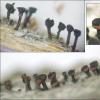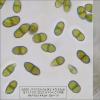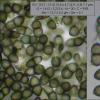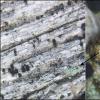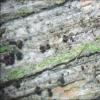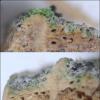
18-12-2025 21:17
Pol DebaenstThe identification took me to Byssonectria deformi

19-12-2025 10:10
Patrice TANCHAUDBonjour, récolte réalisée en milieu dunaire, a

18-12-2025 17:23
 Bruno Coué
Bruno Coué
Bonjour,je serais heureux d'avoir votre avis sur c

18-12-2025 18:07
Margot en Geert VullingsThese plumes were found on rotten wood.They strong

17-12-2025 18:35
 Michel Hairaud
Michel Hairaud
Bonjour à tous/Hi to everyone I am passing along

15-12-2025 15:48
 Danny Newman
Danny Newman
Melanospora cf. lagenaria on old, rotting, fallen

15-12-2025 15:54
 Johan Boonefaes
Johan Boonefaes
Unknown anamorph found on the ground in coastal sa

15-12-2025 21:11
 Hardware Tony
Hardware Tony
Small clavate hairs, negative croziers and IKI bb

15-12-2025 07:09
 Danny Newman
Danny Newman
indet. Rutstroemiaceae sp. on unk. fallen leavesMc
Found these apothecia growing on old wood of Quercus.
Size up to 1 mm high.
I have come to define the genre as Calicium, but it is difficult for me to determine the species. I think it can be C.salicinum, but I wish someone confirm or reject my hypothesis.
Thanks in advance, greetings.
Susana (Spain)
No problem or C. salicinum. Nice photos.
Alain
Greetings
Susana
Reviewing the notes of this collect I've noticed that there may be two species of Calicium mixed on the same substrate.
I came back to look at the microscope and I note that there are two types of spores:
1.-spores with spiral ornamentation belonging to the apothecia with brown capitulum and an average size of 8.1-9.1 x 4.2-4.7um, we determine as C.salicinum.
2 -. Larger spores (12.1-13.3 x 5.9-6.5um) with warty ornamentation and irregular cracks, belonging to the totally black apothecia (top left image macro).
These last apothecia could belong to C.abietinum?
Thank you, greetings
Susana
Amazing !
Ascospores are fissurate-areolate, >12 µm, yes it'sprobably C. abietinum. A very interesting collect !
I suppose that you haven't seen thallus ?
But you also should look towards C. denigratum. Compare the to descriptions to choose.
Alain
First, I have no experiencie in determining this type of fungus.
I looked again the sample.
In my first impression I believed that there was not thallus, I believed it was a very deteriorated surface (Figure 1, left).
Now, I see that appear areas with development of surface thallus (Figure 1, right).
When cut also seems confirmed the presence of surface thallus. One poorly developed thallus.
It would then be C.viride. In two different states of development: young apothecia (brown) and mature (black)?
what do you think?
Thanks
Susana
It's coming more difficult... often Caliciales are associated.
It's not sure that the green granular thallus is the one of the two caliciales (perhaps a third one or another lichen). Calicium viride has a green thallus sometimes granular, but some authors give a different spore's ornementation (I read it could be partially spiraled in C. viride, but sometimes it's said it could be with irregular cracks). Not easy.
Do you want keys for this genus ?
Alain
I used information found on the Internet:
- KEYS TO GENERA AND SPECIES OF Caliciales IN NORWAY (http://www.thavibu.com/caliciales/keyes.htm) and
- Http://lichenportal.org/portal/taxa/index.php?taxon=51834&taxauthid=1&proj=1 for descriptions.
If you have additional information, I would like to receive it.
Thank you very much, greetings
Susana
Hi Susanna,
A few days ago, I found the same lichenized fungus. I think it's Calicium glaucellum. But apothecia shloud be pruinose (white) . I will post photos in database.
Alain

